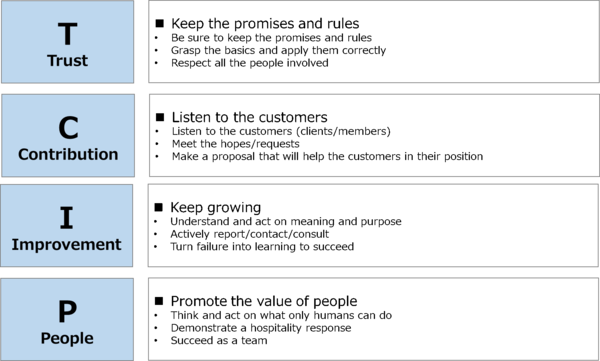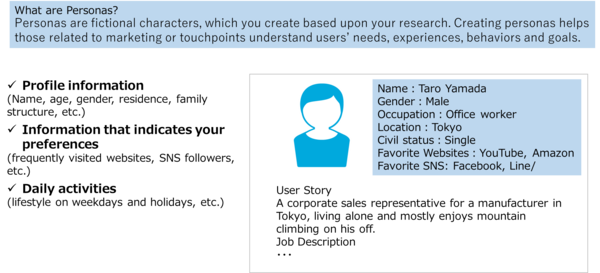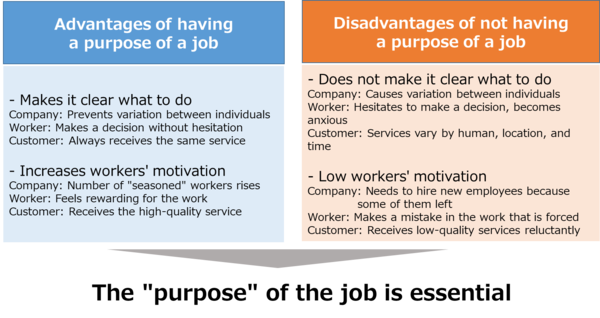
The importance of CX in the era of connectivity
With the proliferation of mobile devices and the rise of social media, "we have entered a completely new 'era of connectivity,'" notes Philip Kotler in his book, Marketing 4.0.
In the era of connectivity where customers connect and have access to various information, a new customer journey suggested by Kotler consists of aware, appeal, ask, act, and advocate(link available in Japanese only) The goal of the customer journey is defined as from "act" to "act/advocate".
Customer experience (CX) is especially essential for customers to have recommended action.
If the customer's CX when buying or using the service exceeds expectations, the customer will be impressed, and repeat (act). Moreover, the customer's reputation will be spread through word of mouth, which will increase the likelihood of new customer acquisition (advocate).
In recent years, contact center positioning has become even more essential in providing CX.
Contact centers in the past set the speed and efficiency like "how to quickly answer more inquiries" as a top priority, and their essential point was "how to decrease the customer's waiting time."
However, now we have the Internet and smartphones, and almost all customers check on FAQs before inquiring to the contact center. In other words, customers hope to ask about something that they do not understand after reading the website or something that they want to know "more deeply."
Therefore the contact center is also required to respond while knowing the difference of each customer. Consistently capturing customer behavior and responding appropriately to each customer leads to improved CX.
It is a big chance for the company that consumers inquire about the company and tell their request by themselves. If the company can use that chance to fully understand customers and sincerely dealing with them, it will bring good experience to the customers, lead to repeat-buying, and get good reviews.
This time, we will discuss how transcosmos is working to improve CX at the contact center.
|
Table of contents
Conducting workshops with client companies
Understanding client companies deeply Understanding customers deeply Clarifying our mission |
Promoting the formulation of the office MVV
transcosmos has been introducing the approach "formulation of the office MVV" at the client's contact point since 2019.
By formulating the office MVV, we aim to move from the traditional contact center type —for "management to improve current issues" such as productivity and response quality— to a new era contact center —for "strategic management toward achieving client management philosophy and vision" such as CX creation, improvement, and change to a profit center—.
"Formulation of the office MVV" is our unique approach. That means we put personal principles (Value) into practice to achieve the mission and vision after understanding the client's ideal state (Vision) to realize the touchpoints that customers expect and recognizing the role and significance (Mission) of the contact center.

Here are some specific approaches to achieve this.
[Requirement definition] Conducting workshops with client companies
- Sharing Vision with client companies
- Formulating the customer journey
- Creating a persona
[Contact center construction] Penetrating non-participating and new members of the workshop
- Sharing the office MVV set in the participatory training program
- Formulating personal principles
[Contact center management] Penetration checks and proposals to client companies
- Checking that the customer's inquiry is handled after understood its background
- Proposal activities to improve CX from the office MVV
The expected effects of these approaches include "response quality improvement," "CX improvement," and "change to a profit center."
Regarding the personal principles (Value), we have replaced the term "TCIP" with the words "Fundamental Management Philosophy" and "Service Mind," which are the origins of transcosmos's value to our customers, to facilitate putting the words into action, and set it for each contact.

Previously, we had emphasized designing business rules to suit our clients. Now all members of us understand our clients' philosophy and focus on working together, based on the current changing circumstances and the idea that CX will change by the change in the awareness of each member working at the contact center.
In the next chapter, we will give you some specific examples of what all the members need to do to work together.
Conducting workshops with client companies
In order to clarify customer expectations and achieve more successful touchpoints, transcosmos holds workshops with customers when we open a contact center to help them realize their vision. Client companies that have been entrusted to us have also begun part of this approach.

Understanding client companies deeply
In order to understand our clients deeply, we conduct detailed discussions on the company's history, vision sharing, background to orders, and expectations for us. Setting the scene in which operation members deeply understand clients' vision and expectations of us also helps prevent initial troubles, for example, "what should not have happened," after the entrusted business.
Understanding customers deeply
We need to understand the customers involved with the client companies after understanding them, and we cannot improve CX without understanding them.
However, even if you say a customer in one word, it varies by age, gender, and interest.
Therefore, we first set up a persona to define a potential customer to be targeted.
A persona is a fictional figure. We draw a fictional and ideal customer figure from real-world information such as existing customers, interviews, and survey data. We can share our ideal customer figure with all the touchpoints and marketing stakeholders. Then, we think about what products and services to offer to the persona.

Let's say you ask a hundred people, "If you were traveling somewhere now, where would you stay?" Then, you may receive a hundred kinds of answers from them.
A hundred people each have different purposes and places to stay, even if they say travel in a word. Some people want to go to a hot spring, while others want to go to a theme park. Some people want to stay in a ryokan (traditional Japanese inn) surrounded by nature, while others want to stay in a luxury hotel in the city. Some people want to get a lower price on travel cost, while others want to live it up.
These expectations varied depending on personal preferences and thoughts are called "individual pre-expectations."
Therefore, we are necessary to create a "customer journey map" while imagining the target customer figure for understanding the customers.
A customer journey map is, as the name suggests, that customer behavior, thoughts, and emotions are mapped in chronological order. We can visualize service challenges, issues, and so on by using it to design services.
Based on the persona we set up, we assume what choices to make, what thoughts to have, how their emotions move, and what to be attended to. Then we think about how to meet customer expectations better.
Since the customer journey map helps us discover ideas and design tips for our services and achieve better CX, we use it as a way to understand customers deeply.
Clarifying our mission
Once we understand our clients and customers, we think about what purpose each of us should be working for. Whether or not we have a purpose of a job makes a big difference in our behavior.
The purpose of a job makes what we should do clear. We can provide services together without hesitating to make decisions and maintain a high level of motivation for the job with the purpose. It leads to lower turnover for the company and gives employees challenges and activeness to the job.
Consequently, the purpose creates a virtuous cycle that improves CX inevitably as the customersalways receive a high level of services.
On the other hand, employees are not sure what to do if they do not have a purpose of the job. They are exhausted both mentally and physically. For example, their behavior varies between individuals, or they hesitate to make decisions and become uneasy. Also, if they do not feel motivated to work, they will naturally not feel rewarding. It results in increased turnover and poor quality of service provided. Of course, the poor quality of service offered to customers will result in less satisfaction, which is hard to improve CX.

transcosmos has each of our members understand the "purpose" of the job, understand the client's ideal state (Vision), and recognize the role and significance (Mission) of the contact center. Based on them, we set a code of conduct, TCIP, to achieve our mission and vision.
Summary
We have just discussed some of the approaches of the office MVV of transcosmos to improve CX, but it makes no sense only to finish formulating them. We conduct daily improvement activities based on the "office MVV" while communicating with our clients.
Also, in order to improve our approaches, we have set up an internal awards system, the "Best of MVV Award," and work on sharing and recognizing results at our contact centers and divisions together.
transcosmos contact center services can deliver from contact center design to operational improvement for improving CX that is crucial in the era of connectivity.
transcosmos is a global and one-stop solution provider that offers digital marketing, 5A analysis, eCommerce and contact center support that adds value through optimizing cost and driving sales. For more information, please feel free to email us at; |
Let’s talk ✉:sales_global@ml01.trans-cosmos.co.jp |













